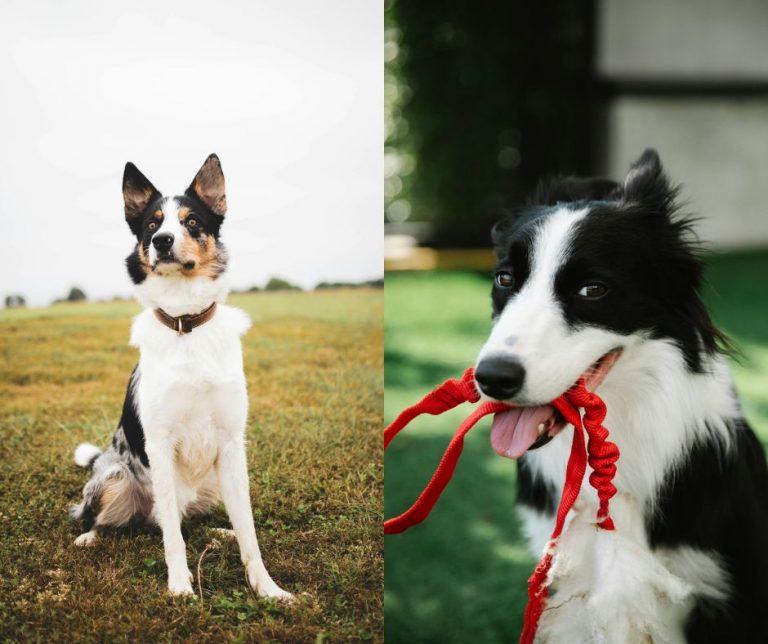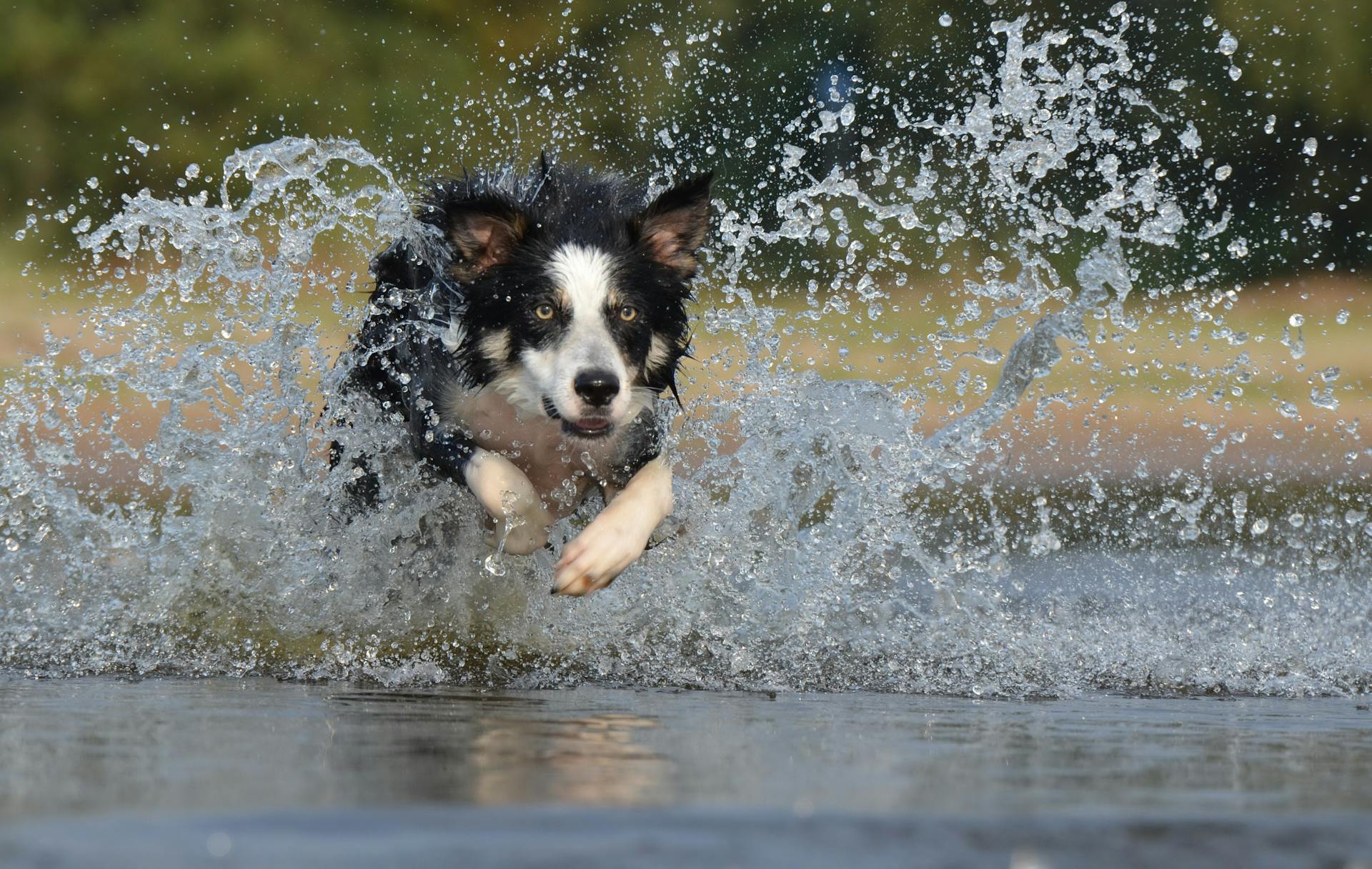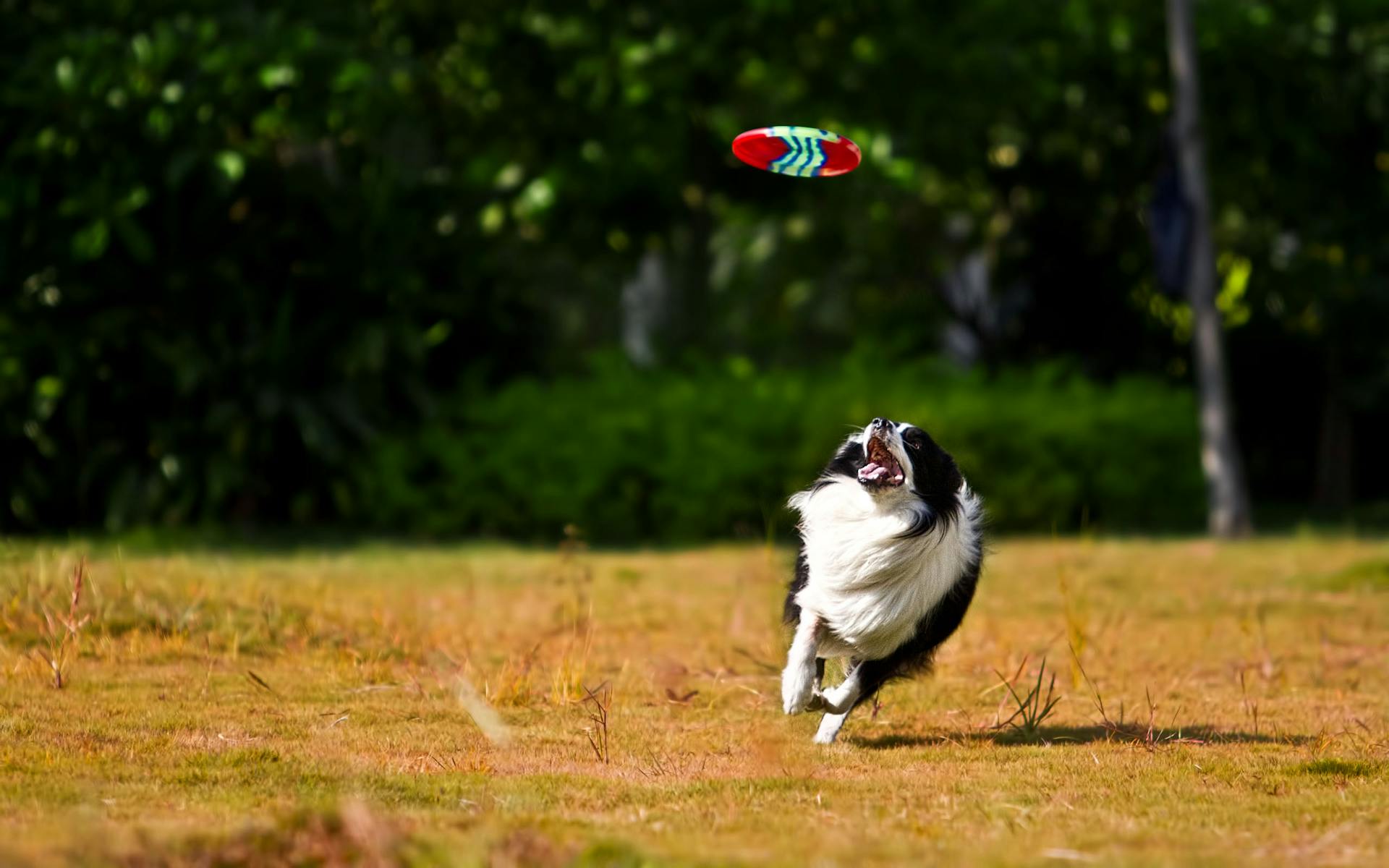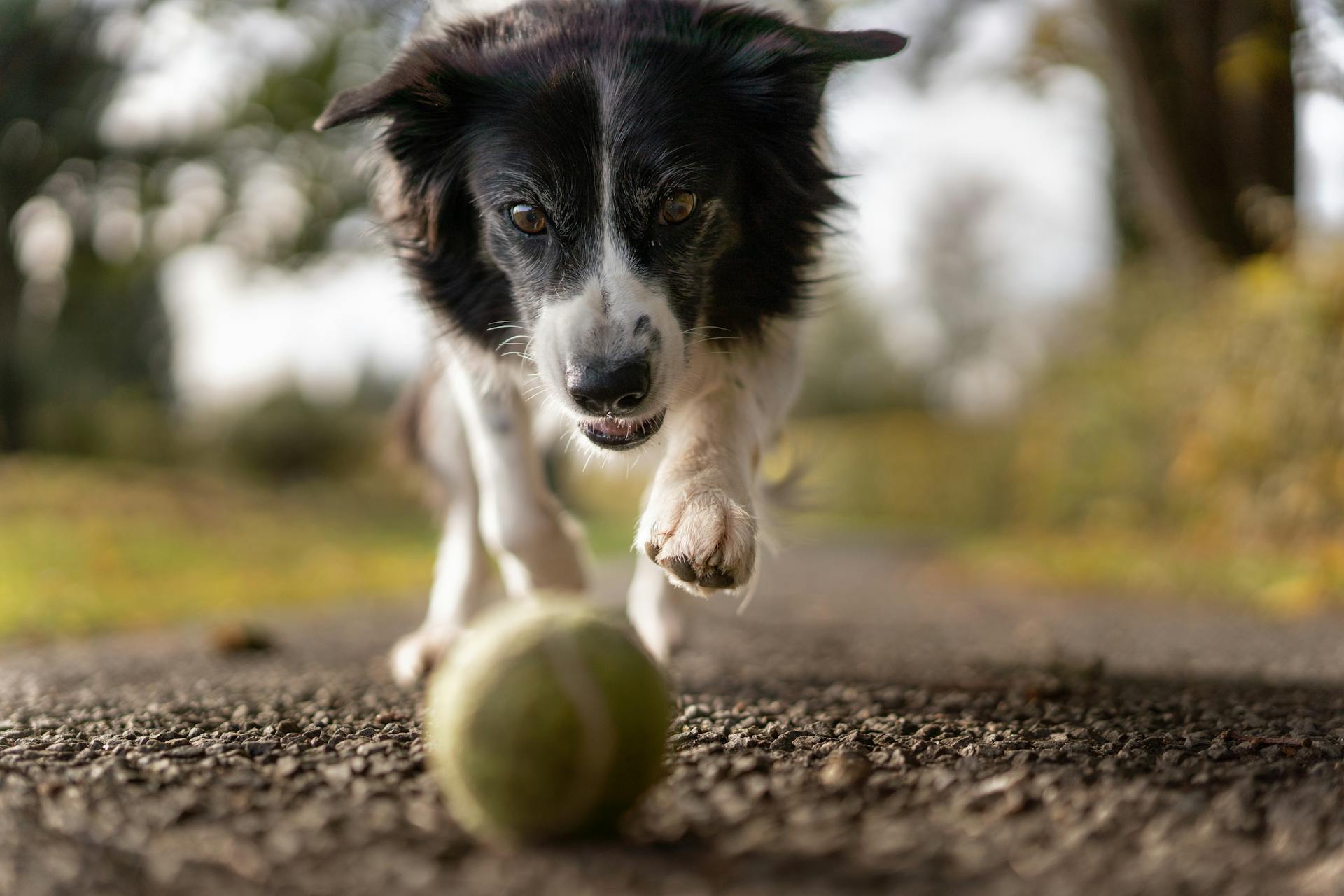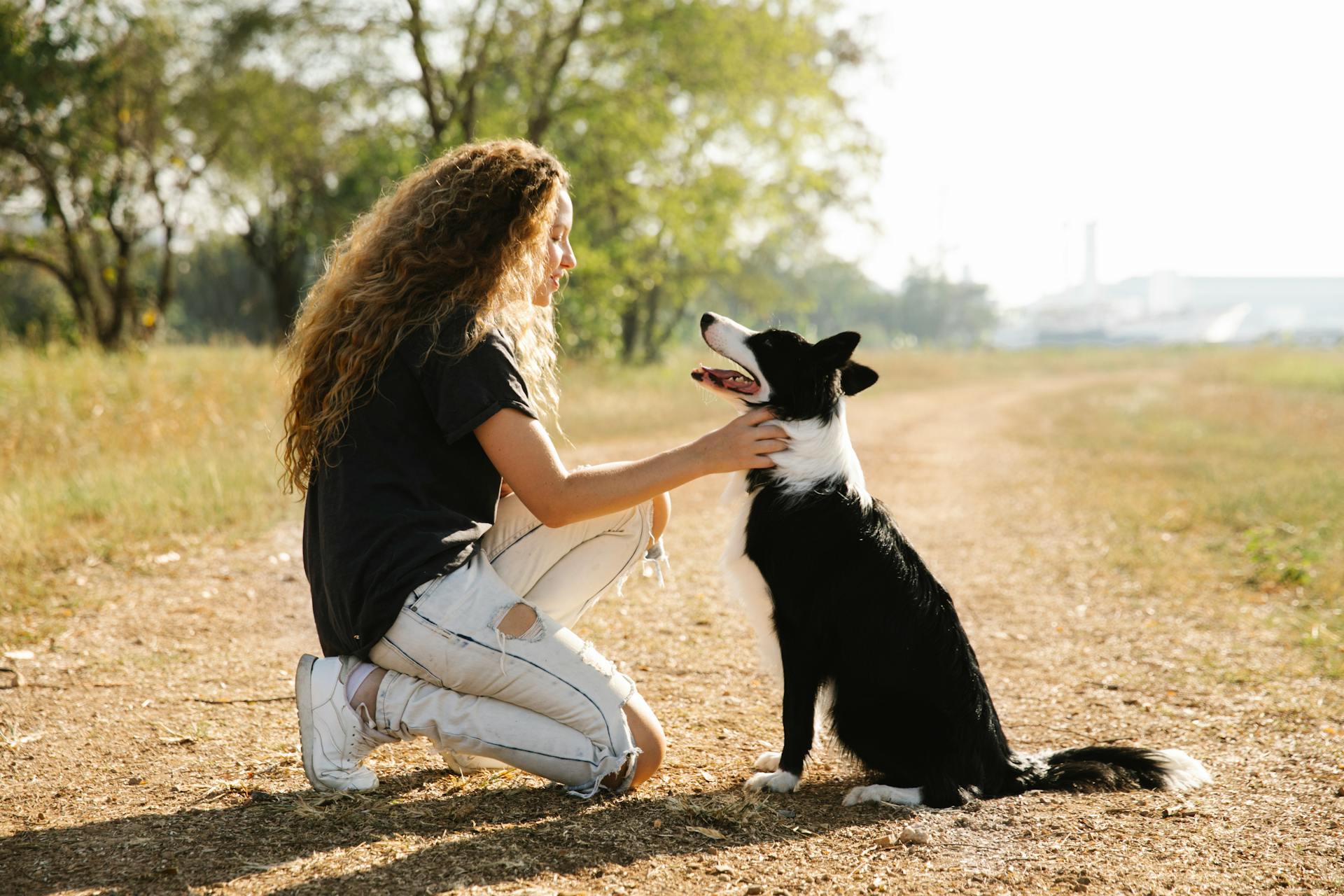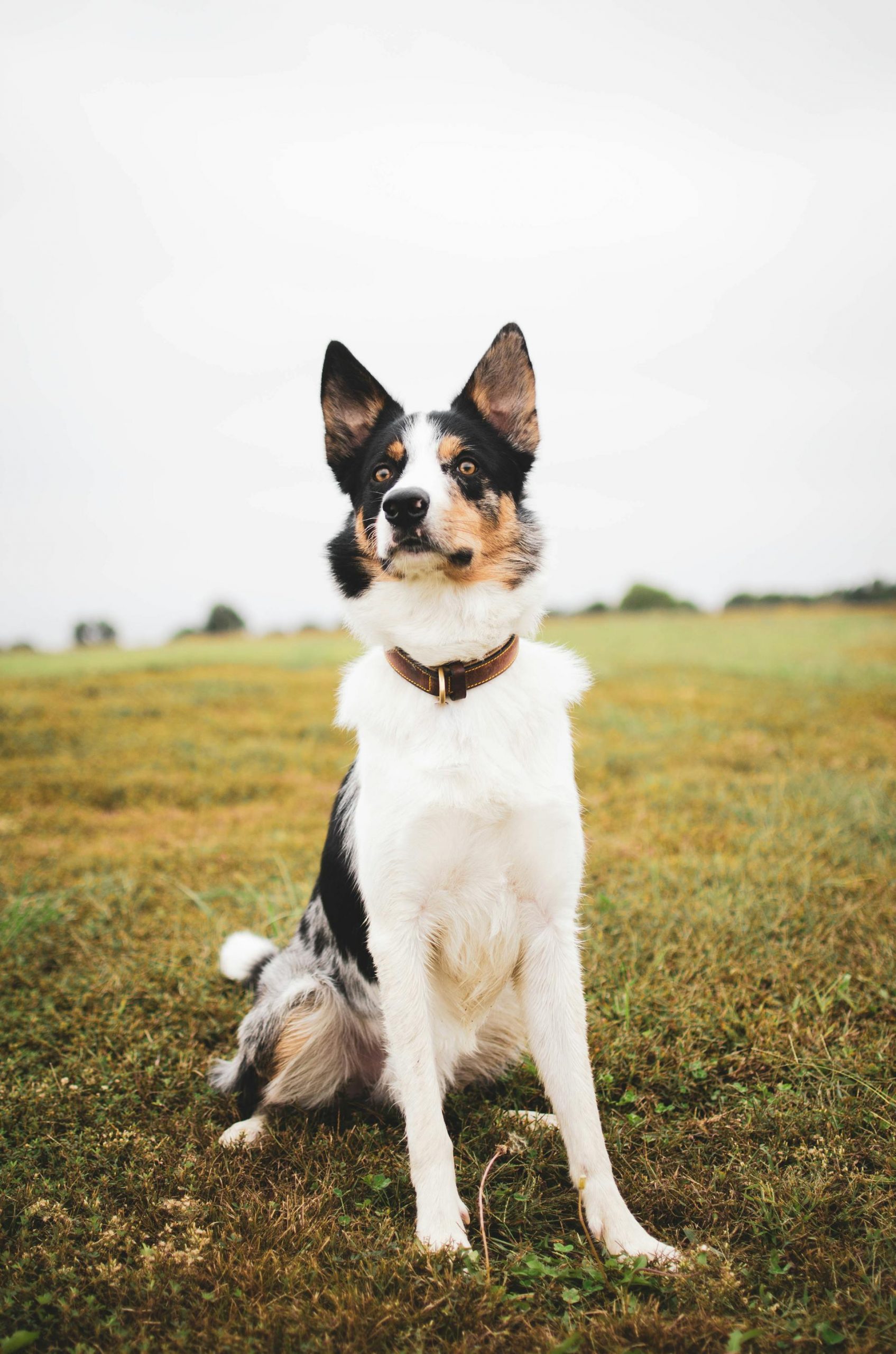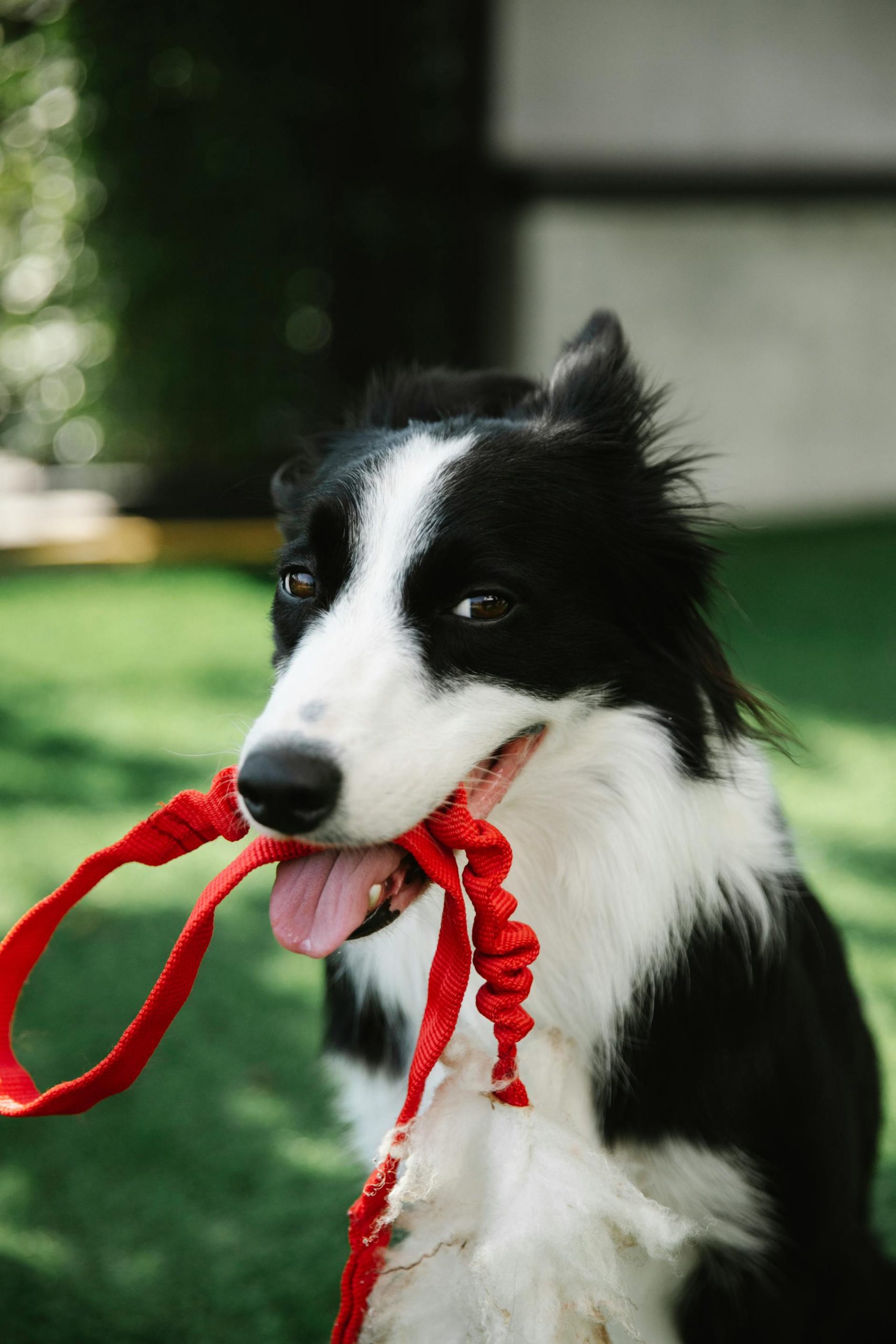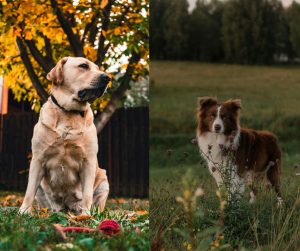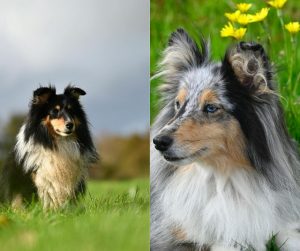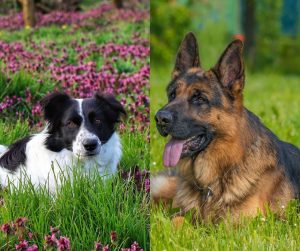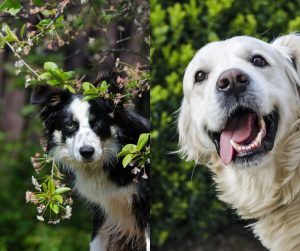When considering a Border Collie as a new furry addition to one’s family, prospective dog owners often weigh the differences between male and female dogs.
Border Collies are known for their intelligence and capability to handle various tasks, making them favored companions for both work and play. However, beyond their well-earned reputation for smarts, there are subtle nuances between males and females that could influence an owner’s decision.
Males and females can generally be distinguished by size, as male Border Collies tend to be slightly larger; males usually grow 19 to 22 inches tall and weigh 30 to 55 pounds.
Personalities also differ slightly between the sexes – for instance, males may display a more independent nature while females can be more nurturing.
Moreover, the dynamic between Border Collies and other pets, as well as their interaction with the family, are essential aspects to consider, since these may vary depending on the sex of the dog. Let’s take a deeper look into the male vs female Border Collie dog breed comparison.
Key Takeaways
- Border Collies exhibit noteworthy intelligence and versatility, irrespective of gender
- Distinct physical and behavior traits can be observed between males and females
- Prospective owners should consider social dynamics and compatibility with their lifestyle when choosing between a male or female Border Collie
Physical and Health Differences
When looking at male and female Border Collies, you’ll notice they share many attributes but have distinct physical characteristics and some health concerns to consider.
While they are equally energetic and intelligent, their size, potential health issues, and grooming needs do show gender-specific trends.
Size and Weight Variations
Male Border Collies typically stand 19 to 22 inches tall and can weigh between 30 to 55 pounds.
In comparison, female Border Collies are commonly a tad shorter, reaching heights of 18 to 21 inches, and they usually tip the scales at 26 to 42 pounds.
Though the difference might not be stark, males are generally stockier with a more pronounced stature.
Health Concerns and Lifespan
Both male and female Border Collies are generally robust dogs. However, males are slightly more prone to hip dysplasia, a genetic condition affecting their hip joints.
On the other hand, females may face health risks related to reproductive health, such as those associated with spaying.
The lifespan for both genders typically ranges between 12 to 15 years, provided they receive proper care and regular veterinary check-ups.
Grooming and Maintenance
Border Collies have dense, double coats that require regular grooming; this is true for both males and females.
Brushing a few times a week helps manage shedding and prevents matting, more so during the bi-annual heavy shed.
However, there is no significant difference in grooming requirements between the two genders, so their maintenance should be equally meticulous.
Regular grooming offers a good opportunity to check for any health concerns like bumps or skin issues.
Engaging with them on this kind of personal care routine not only keeps their coats in top condition but also strengthens your bond with these affectionate companions.
Behavioral Traits and Training
Choosing between a male and female Border Collie, one should consider their differences in behavior and training responses. Each has distinct qualities that might be more suited to different families and lifestyles. This herding dog is among the most intelligent dog breeds. The Border Collie tops the list, but other herding dog breeds are on that list, including the Australian Cattle Dog, Shetland Sheepdog, and Australian Shepherd.
That intelligence is one of the reasons why the American Kennel Club has the Border Collie puppy as one of the 30 most popular dog breeds.
Temperament and Socialization
Male Border Collies often display a more independent streak and can exhibit dominant behaviors, but with consistent socialization, they become loyal companions.
They tend to be playful and might require patient training to focus their energies on tasks or commands.
On the other hand, females are known for being attentive and potentially quicker to learn. They might show more protective behavior, which requires early socialization to ensure they are comfortable around other animals and people.
- Socialization: Essential for both genders from a young age to curb any unwanted behaviors
- Temperament:
- Males: Independent, dominant, yet affectionate
- Females: Energetic and potentially more protective
Training and Obedience
Border Collies stand out with their high trainability and sharp intelligence.
Both genders respond well to praise and positive reinforcement, but their approach may differ.
While males might take a bit longer to stay focused during dog training sessions, females often exhibit a high work drive that makes them thrive in structured activities like agility training.
Neither gender is difficult to train, but each demands an understanding of subtle communicative cues for best results.
- Dog Training Methods: Positive reinforcement works best
- Obedience Levels:
- Males: May need a bit more patience to harness their playful nature
- Females: High drive can lead to quick learning but requires consistent guidance
Exercise Needs and Energy Levels
The energetic nature of Border Collies means both males and females have substantial exercise needs.
They channel their energy through activities such as herding, agility training, and play.
Males may occasionally show slightly less vim than females, but both require mental stimulation to prevent destructive behavior and anxiety.
Proper exercise helps Border Collies to be well-rounded, preventing any nervous or temperamental issues.
- Exercise Needs: Daily physical activity and mental challenges.
- Energy Levels:
- Males: High, though some may be calmer post-neutering
- Females: Generally very energetic, need tasks to focus their energy
Social Dynamics and Relationships
Understanding the social behavior of male vs female Border Collies sheds light on their interactions both within their breed and with others. Here’s an insight into their social dynamics with companionship, protective instincts, and relationships with families and other pets.
Companionship and Affection
Male Border Collie dogs: Often more outgoing, they exhibit an eagerness to engage in play and are known for a boisterous nature, making them lively companions. They can be quite affectionate, frequently seeking attention from their owners.
Female Border Collie dogs: Seem to select their human and animal friends with caution, displaying more independence.
Their approach to cuddling and affection may be reserved, but this doesn’t lessen their loyalty to family members.
Protective Instincts and Territory
Males: They may display stronger territorial behaviors, showing loyalty by guarding their home and loved ones. Their protective instincts can sometimes lead to competitiveness, especially in multi-dog households.
Females: They balance their nurturing instinct with a mild territorial side. They’re less likely to assert dominance for space or control and will typically exhibit protective behavior more subtly.
Interaction with Families and Other Pets
Male and Female Border Collies: Both tend to be family-friendly and capable of forming strong bonds with all family members.
However, their herding heritage can influence how they play with other pets, sometimes leading them to gently herd them.
- Presence with Children: They generally enjoy being part of an active family, but interactions should be supervised to ensure play remains appropriate
- Compatibility with Other Dogs: While individual temperament plays a key role, males might be more playful, whereas females often exhibit selectiveness when choosing other dogs to interact with
Considerations for Prospective Owners
Choosing between a male or female Border Collie is just the tip of the iceberg. Prospective dog owners must understand the commitment that these energetic and intelligent dogs require, and consider the options for adoption and responsible breeding.
Choosing Between Male and Female
When selecting a Border Collie dog breed, knowing the differences between male and female can help align the dog’s characteristics with an owner’s lifestyle.
Male Border Collie dogs s generally grow larger—weighing around 30-45 pounds—and often exhibit more independence and dominance. In contrast, females typically weigh from 27-42 pounds and may display more nurturing behaviors.
- Size: Males larger than females
- Temperament: Males more independent; females may be more nurturing
Understanding the Commitment
Commitment to a Border Collie goes beyond gender differences; it’s about upbringing and maintenance.
Both male and female Border Collies require considerable exercise, mental stimulation, and personal space.
Moreover, their high-energy nature means they thrive on companionship and purpose, be it through activities like agility, herding, or consistent training routines.
- Exercise: Vital for both genders
- Routine: Consistent training and mental tasks
Adoption and Responsible Breeding
Deciding to bring a Border Collie into one’s life through adoption or from reputable breeders requires thoughtful consideration.
It’s not about which is easier to breed or handle; it’s about responsibility.
Adoption can be a rewarding avenue, giving a second chance to a dog in need.
Should one choose to purchase from a breeder, it’s critical to seek those who prioritize the health and well-being of their animals over profit.
Activities and Sports for Border Collies
Border Collies are exceptionally active and intelligent dogs, making them perfect candidates for a variety of activities that can satisfy their need for physical exercise and mental stimulation.
When these dogs have an opportunity to engage in the right activities, they not only maintain their physical health but also showcase their remarkable capabilities.
Agility and Canine Sports
Agility training taps into the Border Collie’s natural agility and determination. In agility courses, they dart through tunnels, weave between poles, and leap over hurdles, all while maintaining high speed and accuracy.
These canine sports require close teamwork between the dog and their human, fostering an extraordinary bond. Competitive agility not only keeps Border Collies physically fit but also mentally sharp, ensuring they’re as happy as they are healthy.
- Common Canine Sports for Border Collies:
- Agility Competitions
- Flyball Races
- Disc Dog Challenges
- Obedience Trials
Herding and Work-related Training
Herding lies at the core of the Border Collie puppy’s heritage, and they thrive when they have a job to do. This work aligns with their natural instincts and provides immense physical exercise as well as mental engagement.
They maneuver flocks with precision and respond to whistle commands from their handlers, demonstrating their work ethic and intelligence. For active families with rural living spaces, involving their Border Collie in herding or work-related tasks can be a deeply rewarding way to keep their dog fit and fulfilled.
- Work-Related Activities Include:
- Competitive Herding Trials
- Farm Work and Livestock Tending
- Search and Rescue Missions
Mental Stimulation and Environmental Enrichment
Mental stimulation is as crucial as physical exercise for a Border Collie’s well-being.
Activities that challenge their brain help prevent boredom and any related behavioral issues.
Environmental enrichment can include puzzle toys filled with treats, learning new tricks, or even interactive play sessions that require problem-solving skills.
Regular mental workouts ensure that these eager-to-please working dog puppies stay engaged with their surroundings and their families.
- Activities for Mental Stimulation:
- Interactive Toys and Games
- Training Sessions for New Commands
- Hide and Seek with Objects or People

